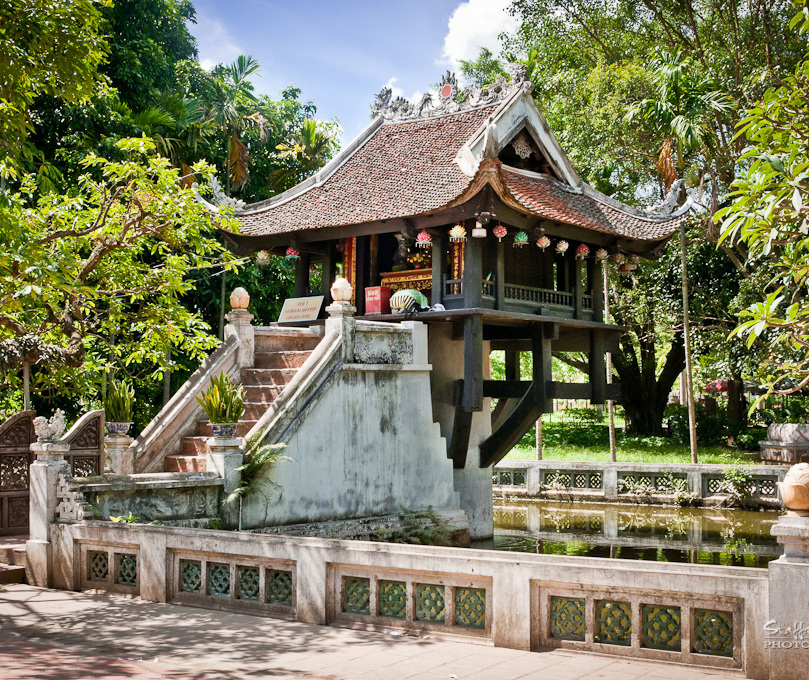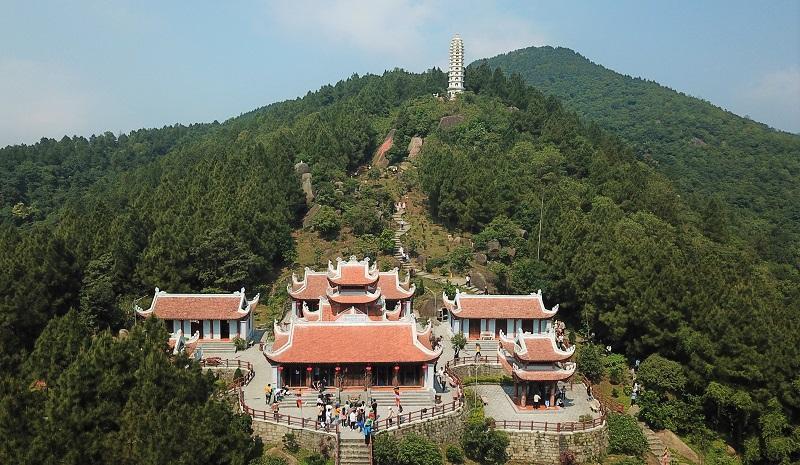1. Introduction
Vietnam, a country steeped in rich history and diverse spiritual traditions, is home to a myriad of shrines that serve as sacred spaces for worship, reflection, and cultural preservation. These shrines, known locally as “đền,” hold a significant place in Vietnamese society. They are dedicated to various spiritual entities, ranging from ancestors and local deities to national heroes and revered figures in Buddhism, Confucianism, and Taoism. The Vietnamese shrines is not just a place of religious devotion but also a cornerstone of the cultural and communal life of the Vietnamese people. Join us in discovering new horizons with YESD.2. Historical and Cultural Significance
Origins of Shrines in Vietnam
The tradition of building shrines in Vietnam is deeply rooted in the country’s history, dating back to ancient times. Initially, these shrines were simple structures, often made of wood or bamboo, and were primarily used for ancestor worship, a practice that remains central to Vietnamese spiritual life. Over centuries, the influence of major philosophical and religious systems such as Confucianism, Buddhism, and Taoism shaped the development and evolution of these shrines.
Vietnam Shrine by the Water
Role of Shrines in Vietnamese Society
Shrines in Vietnam play a multifaceted role. They are places of worship where people go to pray for blessings, health, prosperity, and protection. They also serve as sites for important rituals, especially those related to ancestor worship, which is deeply ingrained in Vietnamese culture. Families visit shrines to honor their ancestors, particularly during significant occasions like Tet (Lunar New Year) and the anniversary of a loved one’s passing. These practices reinforce the Vietnamese values of filial piety and respect for the past.3. Architectural Styles and Common Features
Traditional Vietnamese Architecture
Vietnamese shrines are often designed in accordance with traditional architectural principles that emphasize harmony with nature and simplicity. The architecture of these shrines typically features sloping tiled roofs, wooden beams, and intricate carvings that depict dragons, phoenixes, and other symbols of prosperity and protection. The use of natural materials like wood and stone is common, reflecting the Vietnamese aesthetic that values natural beauty and craftsmanship.Key Elements of Shrine Architecture
While the design of Vietnamese shrines can vary depending on their purpose and the region in which they are located, several key elements are commonly found:- Tam Quan (Triple Gate): This is the main entrance to the shrine, symbolizing the three realms of existence—heaven, earth, and mankind. The gate often features elaborately carved motifs and is an important architectural and spiritual feature.
- Bái Đường (Worship Hall): The worship hall is where offerings and prayers are made. It typically houses the altar and is the focal point of the shrine.
- Hậu Cung (Sanctuary): Located behind the worship hall, the sanctuary is the most sacred part of the shrine, where the central altar and the most revered objects are kept.
- Courtyards and Gardens: Many shrines feature open courtyards and gardens, which enhance the serene and contemplative atmosphere. These areas often include ponds, bridges, and statues, contributing to the overall aesthetic and spiritual experience.
Regional Variations in Design
The architecture of Vietnamese shrines can vary significantly across different regions of the country. In northern Vietnam, shrines tend to be more austere, reflecting the influence of Confucianism and Chinese architectural styles. These shrines often feature dark wood and simpler designs. In contrast, shrines in central and southern Vietnam may incorporate more elaborate and colorful elements, influenced by Cham, Khmer, and indigenous cultures. The materials used can also differ, with some southern shrines featuring bright colors and decorative tiles, while northern shrines might use more muted tones and traditional woodwork.4. Famous Vietnamese Shrines
Vietnam is home to numerous shrines, each with its own unique history, cultural significance, and architectural beauty. Here are some of the most famous and revered shrines in the country:One Pillar Pagoda (Chùa Một Cột)
The One Pillar Pagoda in Hanoi is one of Vietnam’s most iconic religious structures. Originally built in 1049 during the reign of Emperor Ly Thai Tong, the pagoda was designed to resemble a lotus blossom, symbolizing purity in Buddhism. The entire structure rests on a single stone pillar, rising from a lotus pond, creating a serene and mystical appearance. The pagoda is dedicated to Quan Am, the Bodhisattva of Compassion, and is a popular site for both locals and tourists seeking spiritual solace and blessings.
One Pillar Pagoda
Hung Kings’ Temple (Đền Hùng)
Located in Phu Tho Province, the Hung Kings’ Temple is one of the most important national shrines in Vietnam. It is dedicated to the Hung Kings, the legendary founders of the Vietnamese nation, who are believed to have ruled around 2879 BC. The temple complex, which includes several shrines and temples, is situated on Nghia Linh Mountain and is a major pilgrimage site, especially during the annual Hung Kings’ Festival. This festival, held on the 10th day of the third lunar month, is a national holiday and is a time for Vietnamese people to honor their ancestors and national heritage.
Hung Kings’ Temple
Perfume Pagoda (Chùa Hương)
The Perfume Pagoda, located in a vast cave in the mountains of Ha Tay Province, is both a shrine and a popular pilgrimage destination. The pagoda complex is dedicated to Quan Am and is renowned for its stunning natural scenery, including lush forests, limestone cliffs, and flowing streams. Every spring, during the Perfume Pagoda Festival, thousands of pilgrims journey to the site to pray for health, prosperity, and happiness. The journey to the pagoda involves a scenic boat ride followed by a hike up the mountain, making it both a spiritual and physical journey.
Perfume Pagoda
Tran Quoc Pagoda (Chùa Trấn Quốc)
Tran Quoc Pagoda, situated on a small island in West Lake, Hanoi, is the oldest Buddhist shrine in Vietnam, dating back to the 6th century. The pagoda is known for its beautiful architecture, which includes an 11-story red pagoda tower and a tranquil setting surrounded by water and lush greenery. Tran Quoc Pagoda is not only a place of worship but also a popular tourist destination, attracting visitors with its serene atmosphere and historical significance.
Tran Quoc Pagoda
